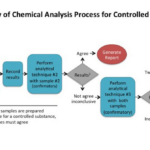
Introduction: Examining the Struggles of a Rising Golf Star
The world of professional sports often finds itself at the intersection of personal ambition, contractual obligations, and the tricky parts of performance management. In recent times, the challenges faced by young golf talent Akshay Bhatia have caught the eye of both sports enthusiasts and legal experts alike. Bhatia, a two-time PGA Tour winner, is confronting a period full of setbacks. His ongoing issues—grounded in his struggles with driving and coaching adjustments—offer a rich case study on how personal performance, coach-athlete relationships, and geographical separation can create tangled issues, not only for the athlete but also when legal and contractual frameworks are involved.
In this editorial, we will take a closer look at the journey of Bhatia from both a sports performance perspective and a legal viewpoint. We will get into how his recent difficulties on the course highlight common problems in sports management and delve into the contractual and regulatory issues that sometimes complicate athletic careers. This discussion is particularly relevant for legal professionals who work within the sports industry, as it underlines the need for robust agreements and effective communication between players and their coaches.
Performance under Pressure: When Skills and Contracts Intersect
The heart of the matter lies in the juxtaposition of Bhatia’s undeniable talent with the nerve-racking pressures of professional competition. Despite recording impressive statistics in putting, which currently places him in a strong ninth position nationally, his struggles with the driver create a scenario loaded with challenges. The fact that Bhatia has managed to secure only three top-10 finishes and has suffered four missed cuts in 13 events during the current season suggests that his technical skills are being hampered by off-course issues—challenges that are often as much about psychological and contractual matters as they are about physical performance.
In the realm of professional sports, maintaining contractual relationships between players and their coaches is key. However, when such relationships become strained by geographical barriers—Bhatia’s coach now resides in a different state—the fine points of communication and performance expectations can become difficult to work through. The legal implications of such arrangements often center on issues like accountability, revision of expectations, and even compensation if performance metrics are not met. These are not just small distinctions but critical factors that can determine the trajectory of an athlete’s career.
Long-Term Athlete-Coach Contracts and Their Legal Implications
The contractual agreements between athletes and their coaches often cover more than just the technical aspects of training. They delve into specifics about overall performance, required training regimes, and even stipulations pertaining to recovery, travel, or technological support. For many legal experts in sports law, these contracts are critical documents that need to address not only success metrics but also the inevitable down periods that even the most talented athletes experience.
Some of the key areas of focus in athlete–coach contracts include:
- Defined performance metrics with clear benchmarks for improvement
- Clauses for adjustments in strategy and technique over time
- Terms outlining the responsibilities of both parties in refining specific skills (e.g., driving and putting in golf)
- Contingencies that address geographical challenges and remote coaching
- Dispute resolution mechanisms in the event of disagreements
The case of Bhatia highlights the need for contracts that are adaptable, especially when circumstances change unexpectedly. As his difficulties with his driver persist and begin affecting his overall ranking, stakeholders are reminded that legal instruments governing sports relationships need to anticipate not only smooth periods of success but also times of significant struggle.
Geographical Separation and Its Complicated Pieces in Coaching Arrangements
One of the most challenging aspects of Bhatia’s current situation is the physical distance separating him from his coach. In professional sports, coaching is often appreciated as a collaborative process where both parties work side by side on the course or practice facility. However, when the coach and player reside in different states, numerous twists and turns can derail the usual flow of training and strategy development.
This physical separation introduces several issues:
- Communication challenges: In-person coaching offers immediate feedback and adjustments; remote interactions can be delayed, leading to misunderstandings or missed opportunities for improvement.
- Logistical complications: Scheduling sessions, arranging travel, or even simply maintaining a regular training schedule can take on a nerve-racking dimension when distances are involved.
- Contractual implications: Contracts may need to include provisions for remote coaching, including the use of technology such as video analysis and digital feedback mechanisms.
Legal professionals working with sports figures must therefore factor in these complicated pieces when crafting agreements. The growing trend toward remote coaching, further accentuated by recent global shifts in work and travel norms, underlines the need for detailed legal frameworks that recognize and address these issues head-on.
Statistical Performance and the Importance of Financial and Legal Accountability
Another angle that emerges from Bhatia’s performance is the importance of closely monitoring statistical data in modern sports. Today’s analytics extend far beyond basic scoring and performance figures; they serve as essential evidence in disputes or contractual renegotiations involving athletic performance. Bhatia’s current standing—as indicated by his 118th ranking in strokes gained off the tee and his top-nine position in putting—provides quantifiable proof of both his strengths and areas needing improvement.
For legal teams in sports law, such statistics are often used to assess a player’s market value, negotiate terms of sponsorship deals, or resolve disputes regarding performance-based compensation clauses. A table like the one below can help clarify how key performance indicators (KPIs) can be systematically analyzed:
| Key Performance Indicator | Current Season Ranking | Area of Strength/Weakness |
|---|---|---|
| Strokes Gained Off the Tee | 118th | Indicates driving difficulties |
| Putting Performance | 9th | Highlights proficiency in putting |
| Top-10 Finishes | 3 Finishes in 13 Events | Shows inconsistency amid sporadic high performance |
| Missed Cuts | 4 in 13 Events | Suggests areas needing urgent improvement |
Such data are not just numbers; they underpin contract negotiations and potential litigation in cases where performance impacts earnings or sponsorship deals. For sports lawyers, making your way through these statistical details is just as important as understanding the legal language in a contract.
Remote Coaching: The Modern Legal and Professional Conundrum
The shift toward remote coaching has provided athletes with a range of new tools and opportunities but has also introduced several off-putting and nerve-racking challenges. As coaches and athletes attempt to work out complicated pieces of their otherwise close-knit relationships, legal advisors must weigh in to ensure that contracts are fair and adaptable. Bhatia’s predicament represents a microcosm of a broader shift in professional sports, where digital communication and remote feedback take center stage.
Benefits and Drawbacks of Remote Coaching
Remote coaching comes with its set of advantages that can significantly benefit an athlete’s performance. However, the drawbacks can be both intimidating and full of problems. The following bullet list enumerates the pros and cons:
-
Pros:
- Access to expert advice regardless of location
- Flexibility in scheduling training sessions
- The ability to use advanced technology for performance analysis
-
Cons:
- The absence of immediate, face-to-face feedback
- Potential delays in communication leading to misinterpretation
- Increased stress due to deciphering video footage without real-time adjustments
Legal frameworks regarding remote coaching must now incorporate clauses that account for these nuances. Questions often arise over the “fine shades” between what constitutes adequate remote support versus traditional in-person coaching. For professionals who draft these agreements, understanding these little twists is super important.
Court Cases and Precedents in Sports Contract Disputes
While the emergence of remote coaching is a relatively recent phenomenon in the legal arena, a few court cases and arbitration panels have begun to set precedents. These cases often revolve around disputes when an athlete’s performance declines, and the athlete claims that inadequate coaching support is at fault. Even though each case’s specifics differ widely, some thematic legal questions frequently emerge:
- Are the terms of remote coaching clearly outlined in the contract?
- What measures were agreed upon to ensure the quality of feedback remains high?
- How is responsibility divided when performance metrics fall below expectations?
- What are the legal remedies available to either party in case of breach?
Several cases illustrate how courts have had to figure a path through these difficulties. In each instance, the challenge of reconciling remote coaching with direct performance improvement measures has led to creative legal interpretations and contractual revisions. The outcome of these disputes influences current and future contracts in sporting disciplines such as golf, tennis, and beyond.
Dissecting the Mental and Physical Toll on Athletes
It is essential to understand that the struggles expressed by athletes like Bhatia are not solely about technical skill. They also involve the overwhelming mental and emotional toll associated with high-pressure performance. With every swing, the pressure to perform can be as intimidating as the legal ramifications of a poorly negotiated contract.
Bhatia’s comments about “struggling pretty deeply with the driver” capture more than just a technical shortfall—they signal an internal battle that affects overall performance. When an athlete’s mental state begins to fray, the performance issues can compound, creating a cycle of setbacks that affect contract negotiations, sponsorship deals, and even public perception.
These situations highlight the following challenges:
- Psychological Pressure: Constant scrutiny, media attention, and self-imposed expectations can create a tense atmosphere that hinders performance.
- Role of Coaching: Coaches must be adept not only in the technical aspects of the game but also in providing robust mental support—a task that becomes even trickier when done remotely.
- Impact on Sponsorship and Earnings: Performance slumps can lead to a reevaluation of a player’s market value, influencing both current contracts and future endorsements.
Legal advisors in the sports field sometimes step in to help provide mechanisms for mental wellness or dispute resolution when performance issues are cited in contractual breaches. For example, some contracts now include provisions for professional psychological support, keeping in mind that the mental state of an athlete is a key component of overall performance.
Strategies for Athletes and Coaches to Overcome Twists and Turns
Given the myriad issues at play, what strategies can athletes and their coaches adopt to overcome these tangled issues? Both parties need to work together, not only to improve performance but also to ensure that their contractual obligations are met in a fair and clear manner. Here are several approaches that can help:
- Enhancing Communication: Regular video calls, prompt feedback, and clearly defined training modules can help reduce misunderstandings between the athlete and coach.
- Revisiting Contracts: Regular reviews of contracts to ensure they reflect current realities, including remote coaching agreements, can mitigate potential disputes.
- Performance Analysis: Using detailed statistics and video analysis helps pinpoint which aspects of the game need improvement.
- Mental Health Support: Incorporating professional mental health support into the coaching regime ensures that performance issues are not solely attributed to technical skills.
- Technological Integration: Leveraging apps and remote analytics tools can bridge the gap created by physical distance.
These strategies are not merely theoretical; they have practical applications. Many top-level sports organizations have already started integrating such measures into their everyday operations, ensuring that both physical and legal challenges are adequately addressed. For legal professionals advising athletes, understanding these elements is critical. Not only do they provide a roadmap for reducing disputes, but they also ensure that both parties are clear on their responsibilities.
Lessons from the PGA Tour and Sports Law Perspectives
The case of Akshay Bhatia offers an interesting lens through which to examine broader contractual relationships in professional sports. Historically, high-level athletic performance has been governed by implicit agreements—both spoken and unwritten—between athletes, coaches, sponsors, and sports organizations. However, the modern landscape necessitates explicit legal clarity. For instance, the PGA Tour, like many sports associations, now emphasizes the importance of clear, written contracts that detail every facet of the athlete-coach relationship.
Key lessons for sports law professionals include:
- Clarity in Language: Contracts must use clear, straightforward language that leaves little room for misinterpretation. This approach helps avoid confusing bits when it comes to pinpointing why performance may not align with expectations.
- Anticipation of Change: Agreements should have provisions that account for evolving circumstances—such as a sudden need for remote coaching.
- Performance Contingencies: Detailed explanations regarding performance metrics—like strokes gained or missed cuts—must be included to protect both parties’ interests.
- Dispute Resolution Clauses: Given the likelihood of disagreements, having predefined methods for resolving conflicts is not just beneficial; it’s super important.
When legal issues are taken into careful consideration, both the club and the athlete are better prepared to face the nerve-racking challenges of professional sports. The integration of these lessons into everyday practice can help mitigate the feeling of being swamped by overwhelming setbacks.
Future Implications: The Evolving Landscape of Sports and Law
Looking ahead, the dynamics between athletic performance and legal obligations are only set to become more intertwined. As sports continue embracing technology, remote coaching, and advanced analytics, the legal frameworks governing these industries must also evolve. The ongoing struggles of players like Bhatia usher in an era where the blend of athletic performance and legal precision grows more critical by the day. The following table summarizes the probable future trends and the corresponding legal responses expected to shape professional sports:
| Future Trend | Expected Legal Response |
|---|---|
| Increased Remote Coaching |
|
| Integration of Advanced Analytics |
|
| Greater Emphasis on Mental Health |
|
| Enhanced Digital Communication |
|
This table illustrates that the legal landscape is evolving alongside technological and managerial shifts in professional sports. For legal practitioners and sports officials alike, these future trends underscore the need to be both reactive and proactive in handling the challenges as they arise.
Bridging the Gap Between Legal Standards and Athletic Realities
Today’s sports industry is not just about swinging a club or sinking a putt; it’s a complex network of relationships and responsibilities that require careful consideration of both the athletic and legal sides. While performance issues can seem overwhelming on the surface, they also present an opportunity for players, coaches, and legal experts to work together in finding solutions that benefit everyone involved.
The Bhatia case, with its mix of technical struggle and contractual contention, serves as a reminder that the little details often matter the most. Whether it is ensuring that a driver functions optimally or that a coach’s feedback is promptly relayed, every fine shade in communication and performance has legal implications. For legal experts in sports, learning to take a closer look at each aspect—even those low-profile nuances—can be the difference between a smooth career and a series of litigious disputes.
Balancing Athletic Ambition with Legal Accountability
At the heart of this discussion is the delicate balance between pursuing athletic excellence and adhering to the essential contractual frameworks that support it. Bhatia’s current predicament—characterized by both technical shortcomings and personal struggles—illustrates the repercussions when the association between an athlete and their coach is disrupted. It begs a larger question: How do we protect the interests of those who risk so much on the field while ensuring that legal standards are met?
For sports executives and legal advisors, the solution lies in creating comprehensive strategies that address every layer of these relationships. Some key points include:
- Proactive Contract Review: Regular reviews of all contractual obligations can help both athletes and their teams stay updated with the current realities. This proactive approach also minimizes nerve-racking misunderstandings.
- Clear Communication Channels: Establishing structured and reliable communication methods ensures that both parties can figure a path through any challenges that arise, even when physical proximity is lacking.
- Performance Stipulations and Contingencies: Embedding clear performance indicators within contracts offers both legal and practical clarity. When an athlete like Bhatia struggles with his driver, having these stipulations in place allows for objective assessments.
- Support for Mental and Physical Well-Being: Legal frameworks now increasingly acknowledge the importance of mental health in athletic performance. Including provisions for counseling or professional support can alleviate some of the overwhelming burdens athletes face.
These measures are not only key to protecting an athlete’s career but also ensure that legal disputes are minimized. When both the athlete and the coach feel that their responsibilities are clearly defined and legally supported, the partnership is more likely to succeed even when confronted with confusing bits and nerve-racking moments.
Legal Precedents and Trends in Sports Contracts
Legal precedents in sports contracts are steadily shaping the future. Courts have increasingly recognized the need for flexibility when it comes to managing athletic performance issues, particularly in cases involving remote coaching or significant performance deviations. By carefully analyzing past rulings, we can identify several trends:
- Increased Judicial Support for Remote Arrangements: As simpler in-person coaching models give way to remote setups, courts often side with athletes when contracts are ambiguous about performance benchmarks.
- Greater Emphasis on Data-Driven Decisions: Courts are beginning to place more reliance on statistical performance data. This trend reinforces the need for precision when outlining performance expectations in contracts.
- Encouragement for Mediation: To avoid drawn-out litigation, many contractual disputes now favor mediation and alternative dispute resolution methods, aiming to steer through challenges collaboratively.
For legal experts in the sports field, these small distinctions in precedent not only influence current contracts but also set the groundwork for future negotiations. They serve as a reminder that every twist and turn in an athlete’s performance may have legal ramifications that need swift and thoughtful attention.
The Human Element: Reflections on Professional Aspiration and Vulnerability
While data, contracts, and legal frameworks serve as pillars for safeguarding professional interests, it is important to recognize the human element inherent in every athletic performance. Bhatia’s candid admission of his difficulties is not just a snapshot of professional shortcomings—it is also a glimpse into the nerve-racking pressures that come with striving for excellence in an unforgiving environment.
In the corridors of legal and sports administration, professionals are increasingly asked to consider the vulnerability of athletes. The personal toll that pressure takes can have significant downstream effects, including influencing contract negotiations and the interpretation of performance-based clauses.
This consciousness of vulnerability is one of the reasons why many modern contracts have moved away from rigid, one-size-fits-all stipulations towards more flexible arrangements that account for:
- Unforeseen performance fluctuations
- External factors affecting an athlete’s well-being
- Temporary setbacks or periods of adjustment
These flexible arrangements are not only realistic but also compassionate, recognizing that even prodigious talents may experience periods of difficulty when managing both the physical and mental aspects of professional performance.
Integrating Compassion with Contractual Clarity
Finding your path in the world of sports law requires a delicate integration of empathy and astute legal judgment. On one hand, contracts must protect the economic and professional interests of all parties involved; on the other, they must also allow room for human imperfection. Striking that balance is challenging but necessary. The following strategies can help ensure that empathy does not compromise contractual clarity:
- Incorporating Performance Buffers: Establish clauses that allow for temporary deviations from performance standards without triggering severe penalties.
- Flexibility Provisions: Add language that permits adjustments in response to significant external or personal challenges.
- Mediation and Counseling Agreements: Include provisions that mandate mediation in case disputes arise, ensuring that conflicts are managed through dialogue rather than litigation.
This integrated approach represents a forward-thinking trend in sports law—a trend that acknowledges that understanding the subtle parts of human performance is as critical as the legal terms that govern them.
Conclusion: A Call for Collaborative Legal and Athletic Progress
The story of Akshay Bhatia’s recent struggles is more than a tale of missed cuts and technical misfires on the golf course. It serves as a microcosm of contemporary challenges that athletes face when professional ambitions collide with complex contractual and internal issues. Whether it’s the intimidating pressure of perfecting a drive or the tangled issues arising from remote coaching, every aspect of this narrative has significant legal overtones.
For those of us in legal and sports fields alike, Bhatia’s journey underscores the need for well-drafted contracts, regular communication, and a compassionate approach that recognizes the human factor in high-performance sports. As legal advisors, we must take a closer look at every component—from statistical data to the hidden complexities of athlete-coach relationships—and work to ensure that every agreement is both clear and compassionate.
Moving forward, we must embrace the dual challenge of managing both the technical and legal aspects of athletic performance. In doing so, stakeholders can help ensure that even when faced with nerve-racking or overwhelming setbacks, athletes have the necessary support to recover, improve, and ultimately realize their full potential.
It is hoped that as the landscape of professional sports continues to evolve with digital transformation and new coaching methods, legal frameworks will also adapt. By creating balanced, flexible contracts and effective dispute resolution mechanisms, we can foster an environment where talent thrives and both players and coaches are empowered to overcome every twist and turn along the way.
In conclusion, the intertwined narrative of performance struggles and legal considerations in Bhatia’s case is ultimately a call for collaboration—a call for athletes, coaches, and legal professionals to work together in sorting out the many challenges of today’s high-pressure sports world. By embracing innovation and compassion alongside rigorous legal standards, the sports industry can continue to grow in fairness and excellence.
This editorial serves as both an observation and a recommendation to all involved in the realm of professional sports. For legal practitioners, it is a reminder to sharpen your skills in drafting, negotiating, and mediating agreements that not only reflect the measurable qualities of performance but also accommodate the inevitable variations in human capability. For athletes and their teams, it is encouragement to remain persistent, adaptive, and above all, honest about the struggles that accompany the pursuit of greatness.
Ultimately, it is clear that the balance between physical prowess and contractual stability will continue to define the future of professional sports. As we figure a path through the tricky parts and tangled issues of athletic careers, only by addressing both the legal and personal dimensions can we hope to create an environment where every player, regardless of temporary setbacks, can achieve enduring success.
Originally Post From https://motorcyclesports.net/akshay-bhatias-raw-confession-struggling-deeply-with-driver-coach-challenges-pga-tour-drama/
Read more about this topic at
Academic Grit in the Face of Adversity
Grit (personality trait)


